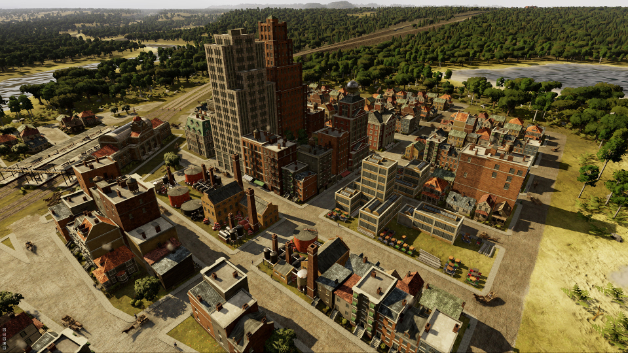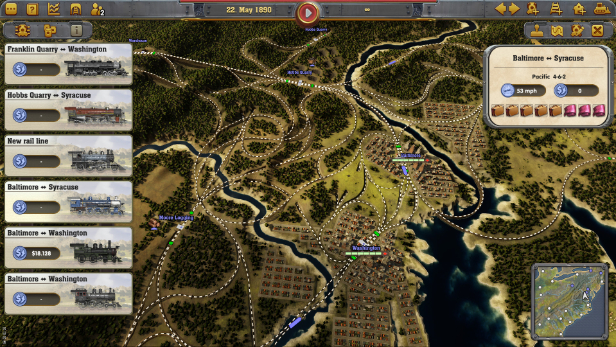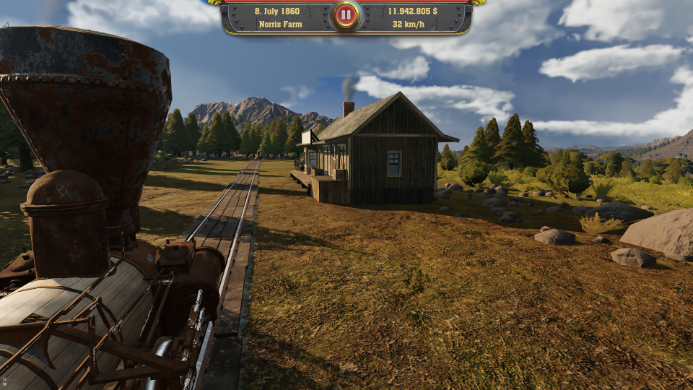“…Railway Empire is a delight.”
Railway Empire is a match made in heaven for tycoon game fans and locomotive enthusiasts. Developed by Gaming Minds Studios (Grand Ages: Medieval) and published by Kalypso Media (Tropico 5, Dungeons 3), the game challenges players to forge the infrastructure of iron and steam that carried the United States of America to interconnected transport and trading prosperity.

Creating what quickly becomes an impressive and intricate network, players are challenged to keep up with the rapidly growing demands of their patrons and stay ahead of the emerging competition on the lines. Strategically laying tracks and placing stations with moderate historical and geographical accuracy, the power of creative, intuitive and efficient design is fully entrusted with you, flowing straight from the tutorial stages.
Fortunately, the teaching experience which the game offers is quick and effective, setting you swiftly on your way. Perhaps the greatest hurdle to overcome is the game’s various buttons and menus, particularly when it comes to functions such as turning placement on and off as you work. Traversing this UI is not the smoothest example of its kind, but before too long you can begin figure it out.

Whether you are enjoying the game’s healthy campaign offering or simply playing out one of its various scenarios, you challenge first and foremost is plotting your route from A to B. Railway Empire, however, is comprehensive in the challenges that it places before you in achieving this goal. Not only is the path itself important, but the pit stops, resource pickups, station placements and organisation of the locomotives on the tracks themselves are all key considerations which you, the player, are required to consider.

A test though this may be, the clarity of the game’s tutorial, the help offered by its systems and a teaspoon of common sense make this task an achievable, albeit not always easy, one to complete. Indeed, for fans of games such as Kalypso’s Tropico series, the methods for placement of tracks and buildings, as well as obtaining resources and managing your infrastructure once it is completed, will feel relatively natural and familiar. The developers at Gaming Minds have done well to emulate and adapt a now common and successful model to their needs, and those of the player.

Of course, constructing a railway network so grand that it reaches from coast to coast is not all fun and trains. The game gives the player a sense of development and progression through research, allowing them to entertain new possibilities to increase the productivity and efficiency of their network. This can include new locomotives, buildings, track improvements and other general upgrades, and works well in the context of play as a progression system which offers some sense of reward for your efforts. Certainly, the wealth of historically accurate locomotives on offer to unlock will delight both enthusiasts and more casual enquirers alike. The ability to “ride along” on said beasts in first person will bring a sense of thrill to some, too. It is not the cleanest part of the game’s aesthetics, but it is a welcome feature nonetheless.

Naturally, progress sometimes requires sacrifice, but why sacrifice your own assets when you can sabotage your opponents’? As you progress in Railway Tycoon, what begins as healthy completion can, at times, become vicious. Sabotage and espionage are, however, options at your disposal. Putting moral objections aside, hiring a bandit raid on a competitor’s lines worked more than once as a tactic of play for me. At first, I felt bad about it, but with time the benefits would outweigh the ethical costs… That being said, the developers have recognised that the brutality of dirty business may not be to all players tastes, balancing their title graciously with a more relaxed construction mode without the economic provocations of the main campaign. Essentially a sandbox mode where cost is no longer an issue, this seemed to me to be the ideal mode of play for the more avid fan of real-world railway history.

In the mainstream modes of play, gameplay in Railway Empire is challenging from the off. On the flipside, it is also never frustrating or overwhelming. A good balance has been struck here again, and gamers will enjoy the game’s missions as such. The experience is amplified further still by the game’s aesthetics, from the colour pallet, to the detailed models, to the landscape of the USA map and even so far as the animations once your network is in action. Once the legwork is done, it is easy to look on with pride at your creation, as locomotive after locomotive traverse the tracks in mechanical harmony. It is at this point, a few hours into the game, where the reward of your efforts suddenly becomes clear, and that payoff is worth the effort in the build-up.

Needless to say, Railway Empire is a delight. It may not be perfect, with some clunky UI navigation and a mildly underworked first-person perspective, but on the whole the game is everything that it promises to be. It makes a visible attempt to cater to every kind of player that might come its way, from train enthusiasts to avid strategy and tycoon gaming fans. This, in itself, is a level of effort which cannot be said to be true for numerous other titles. An effective and entertaining simulation of the construction and management of the USA’s immortal railway empire of old, with a succulent side of historically inspired models and missions to support it, Railway Empire is worthy of recommendation. Perhaps its biggest challenge, however, will be its price point. If nothing else, you should at least keep it in mind on your wish list.








You must be logged in to post a comment.